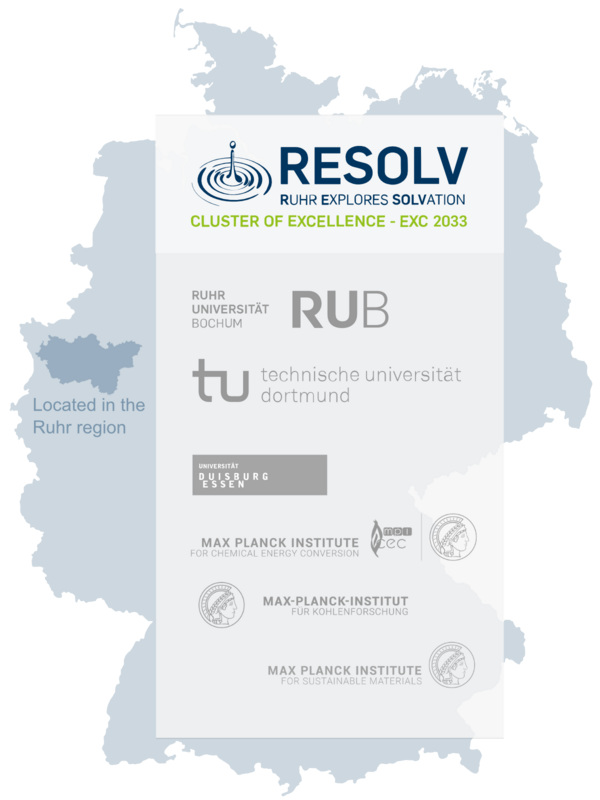D. L. Reinhard, A. Iniutina, S. Reese, T. Shaw, C. Merten, B. List, S. M. Huber, Asymmetric Counteranion-Directed Halogen Bonding Catalysis, J. Am. Chem. Soc. 147, 8107-8112 (2025). 10.1021/jacs.4c18378
S. Ghosh, C. K. Das, S. Uddin, S. T. Stripp, V. Engelbrecht, M. Winkler, S. Leimkuhler, C. Brocks, J. Duan, L. V. Schäfer, T. Happe, Protein Dynamics Affect O2-Stability of Group B [FeFe]-Hydrogenase from Thermosediminibacter oceani, J. Am. Chem. Soc. 147, 15170-15180 (2025). 10.1021/jacs.4c18483
S. S. Nalige, P. Galonska, P. Kelich, L. Sistemich, C. Herrmann, L. Vukovic, S. Kruss, M. Havenith, Fluorescence changes in carbon nanotube sensors correlate with THz absorption of hydration, Nat. Commun. 15, 6770 (2024). 10.1038/s41467-024-50968-9
F. Novelli, K. Chen, A. Buchmann, T. Ockelmann, C. Hoberg, T. Head-Gordon, M. Havenith, The birth and evolution of solvated electrons in the water, Proc. Natl. Acad. Sci. U.S.A. 120, e2216480120 (2023). 10.1073/pnas.2216480120
T. van Lingen, V. Bragoni, M. Dyga, B. Exner, L. Gooßen, D. Schick, C. Held, G. Sadowski, Carboxylation of Acetylene without Salt Waste: Green Synthesis of C4 Chemicals Enabled by a CO2-Pressure Induced Acidity Switch, Angew. Chem. Int. Ed. 62, e202303882 (2023). 10.1002/anie.202303882
J. F. Goebel, J. Löffler, Z. Zeng, J. Handelmann, A. Hermann, I. Rodstein, T. Gensch, V. H. Gessner, L. J. Gooßen, Computer-Driven Development of Ylide Functionalized Phosphines for Palladium-Catalyzed Hiyama Couplings, Angew. Chem. Int. Ed. 62, e202216160 (2023). 10.1002/anie.202216160
J. Daru, H. Forbert, J. Behler, D. Marx, Coupled Cluster Molecular Dynamics of Condensed Phase Systems Enabled by Machine Learning Potentials: Liquid Water Benchmark, Phys. Rev. Lett. 129, 226001 (2022). 10.1103/PhysRevLett.129.226001
find out more













